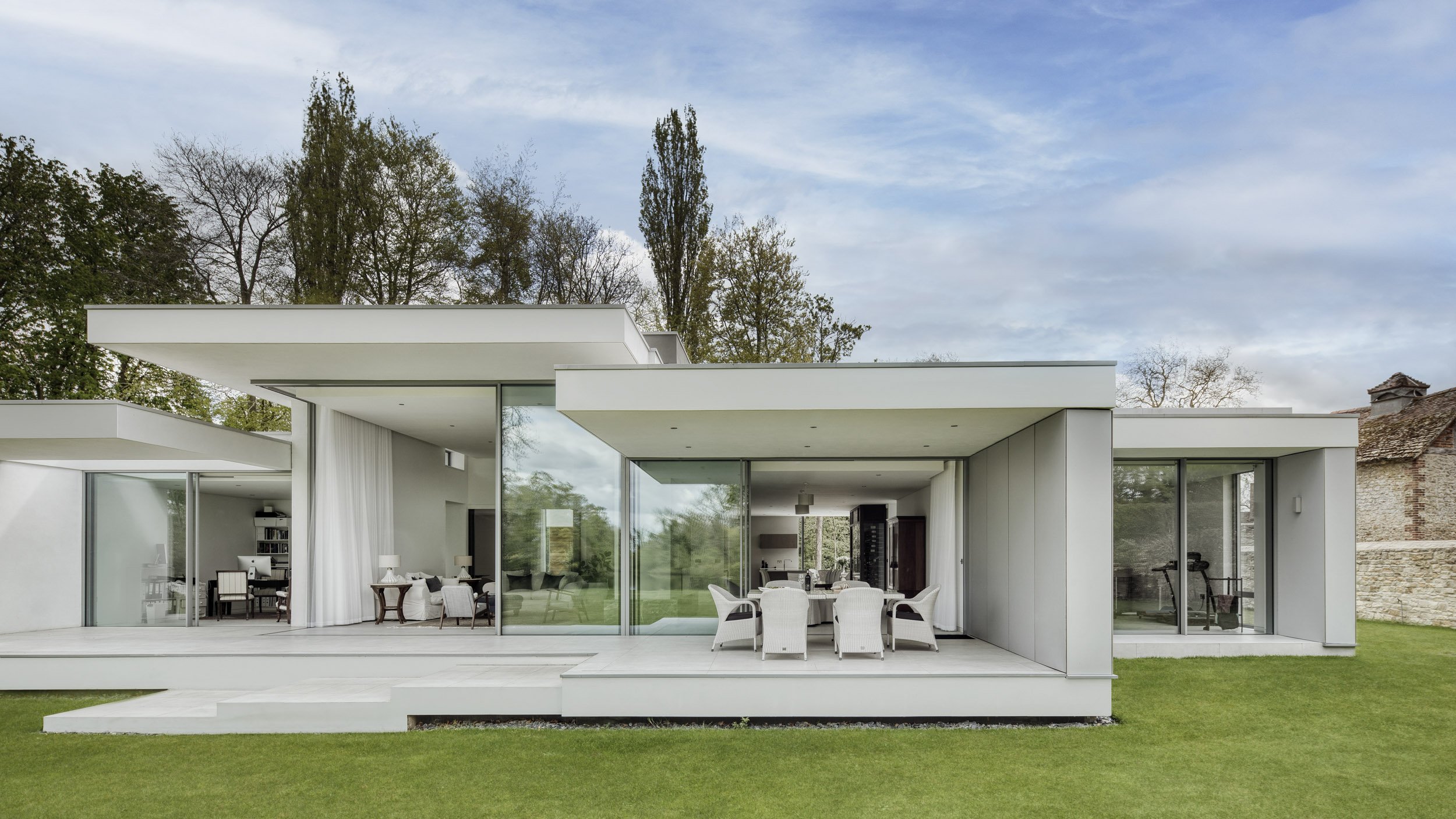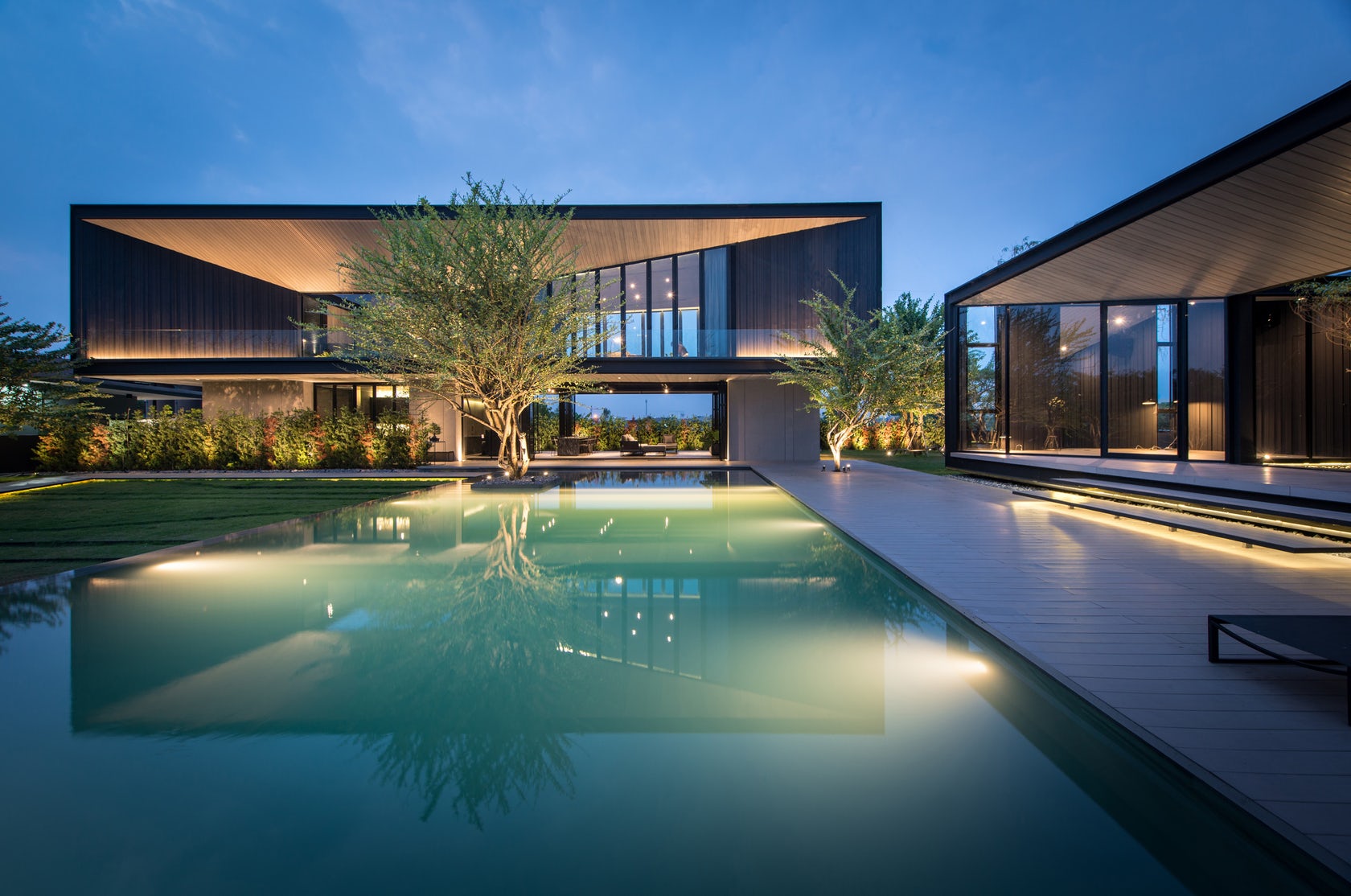Why Modern Home Style Is Crucial for Sustainable Living Today
The assimilation of modern home design right into sustainable living practices is progressively identified as a pivotal factor in attending to ecological difficulties. By leveraging cutting-edge products and energy-efficient layouts, modern homes not only minimize environmental impacts however also boost the quality of life for their residents.
Innovative Products and Techniques
Over the last few years, the assimilation of ingenious materials and techniques has actually reinvented contemporary home architecture, with countless architects and builders welcoming sustainable techniques. The application of materials such as bamboo, redeemed wood, and recycled metal not just minimizes environmental effect yet also enhances the aesthetic appeal of homes. Bamboo, for example, is a quickly renewable energy that supplies remarkable strength and flexibility, making it a perfect option for structural aspects and coatings.
In addition, progressed building strategies, such as modular structure and 3D printing, have actually emerged as significant contributors to sustainability. Modular construction permits decreased waste and shorter building times, while 3D printing allows precision in creating complex designs with minimal material use. These methods not just streamline the building procedure yet additionally reduced the carbon impact connected with traditional construction practices.
Furthermore, the use of innovative insulation materials, such as aerogels and phase-change materials, enhances thermal efficiency, enabling homes to keep comfy temperature levels with less energy intake. As engineers proceed to explore and implement these brand-new products and methods, the potential for creating lasting living atmospheres ends up being increasingly viable, ultimately bring about an extra accountable approach to home style.
Energy Performance in Style
Numerous property owners are progressively prioritizing energy effectiveness in their building styles, identifying its essential duty in minimizing utility prices and reducing ecological impact. Reliable energy-efficient design begins with the orientation and format of a home, maximizing all-natural light and air flow. This can considerably lower reliance on fabricated illumination and mechanical home heating or cooling systems.
The choice of high-performance insulation products and energy-efficient windows plays a critical role in preserving a comfortable indoor environment, minimizing warm loss in winter and keeping insides cool during summer season. melbourne home residential projects. Additionally, integrating easy solar design principles can harness sunshine for home heating, therefore decreasing the requirement for standard power resources.
Lasting building practices likewise consist of using energy-efficient devices and components, which contribute to reduce energy usage over the life-span of the home. By integrating sustainable techniques right into the design stage, engineers can produce homes that not just fulfill aesthetic choices however likewise stick to stringent energy performance standards.

Assimilation of Smart Technology
The integration of smart innovation into contemporary home design stands for a transformative technique to boosting both ease and sustainability. By including smart systems and gadgets, house owners can maximize power usage, enhance everyday tasks, and boost general high quality of life. Smart thermostats, for example, enable precise temperature control, adjusting to citizens' routines and preferences, which considerably decreases energy waste.
Moreover, clever lights systems can be configured to adjust based on all-natural light schedule, making certain that power is utilized successfully throughout the day. These systems not just minimize electrical energy consumption yet additionally prolong the life expectancy of lights components - melbourne home residential projects. Additionally, wise devices add to sustainability by supplying real-time information on power usage, allowing homeowners to make informed decisions concerning their usage habits
Home automation systems help with seamless assimilation of different innovations, allowing control from a solitary user interface. This interconnectedness reaches security systems, water administration, and environment controls, producing a holistic method to sustainable living. Ultimately, the unification of smart technology into modern design not only boosts performance but additionally straightens with the broader goals of environmental stewardship, making homes a lot visite site more durable and versatile in an ever-evolving globe.
Impact on Urban Preparation
Smart innovation not just improves private homes yet also dramatically influences city preparation, improving exactly how cities are made and function. The assimilation of clever systems in modern-day YOURURL.com style permits for more efficient source administration, which is vital in urban environments where room and resources are limited.
Cities significantly utilize information analytics and IoT (Web of Points) devices to optimize website traffic flow, energy consumption, and public solutions. Smart grids can manage electrical power usage in real time, reducing both prices and emissions. By prioritizing lasting methods, urban planners can produce durable facilities that adapt to ecological modifications and populace development.
Moreover, contemporary home architecture urges mixed-use developments that advertise walkability and lower dependence on automobiles, further decreasing city carbon impacts (melbourne home residential projects). Public rooms are developed with sustainability in mind, integrating environment-friendly roofing systems, urban yards, and absorptive pavements that enhance biodiversity and manage stormwater efficiently
Enhancing Lifestyle
Integrating sustainable layout principles into contemporary home architecture substantially enhances lifestyle for homeowners. By prioritizing power effectiveness, natural light, and lasting products, these homes develop settings that cultivate wellness and convenience. Thoughtful design elements, such as more helpful hints open flooring strategies and big home windows, not only reduce power consumption but likewise advertise psychological health and wellness via increased direct exposure to all-natural light and outdoor sights.
Additionally, modern sustainable homes typically integrate eco-friendly areas, such as gardens or eco-friendly roof coverings, which add to boosted air top quality and offer locals with chances for leisure and entertainment. These areas motivate a connection with nature, improving general state of mind and reducing stress levels.
Additionally, the usage of sustainable products can lessen environmental impact, resulting in healthier indoor atmospheres by lowering hazardous chemicals. This focus on wellness prolongs past specific homes to neighborhoods, as areas created with sustainability in mind usually consist of walkable locations, advertising exercise and social interaction amongst homeowners.

Verdict
In conclusion, modern home design plays an essential duty in advertising sustainable living through the unification of innovative materials, energy-efficient designs, and clever technologies. This method not only addresses instant environmental issues yet also adds to the lasting well-being of areas. By improving city planning and prioritizing the high quality of life, contemporary building practices develop unified home that line up with eco-friendly principles, ensuring a sustainable future for generations to find.